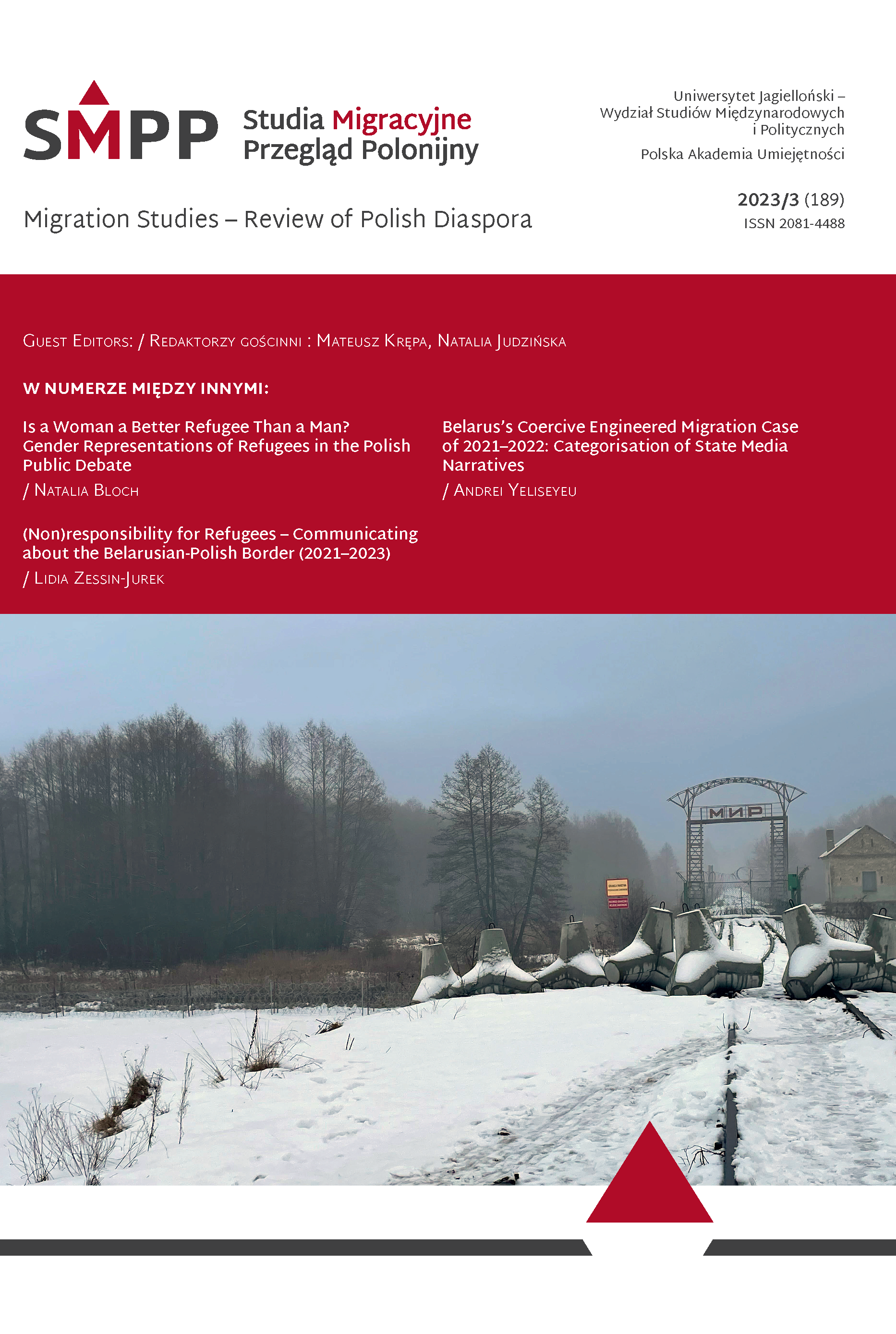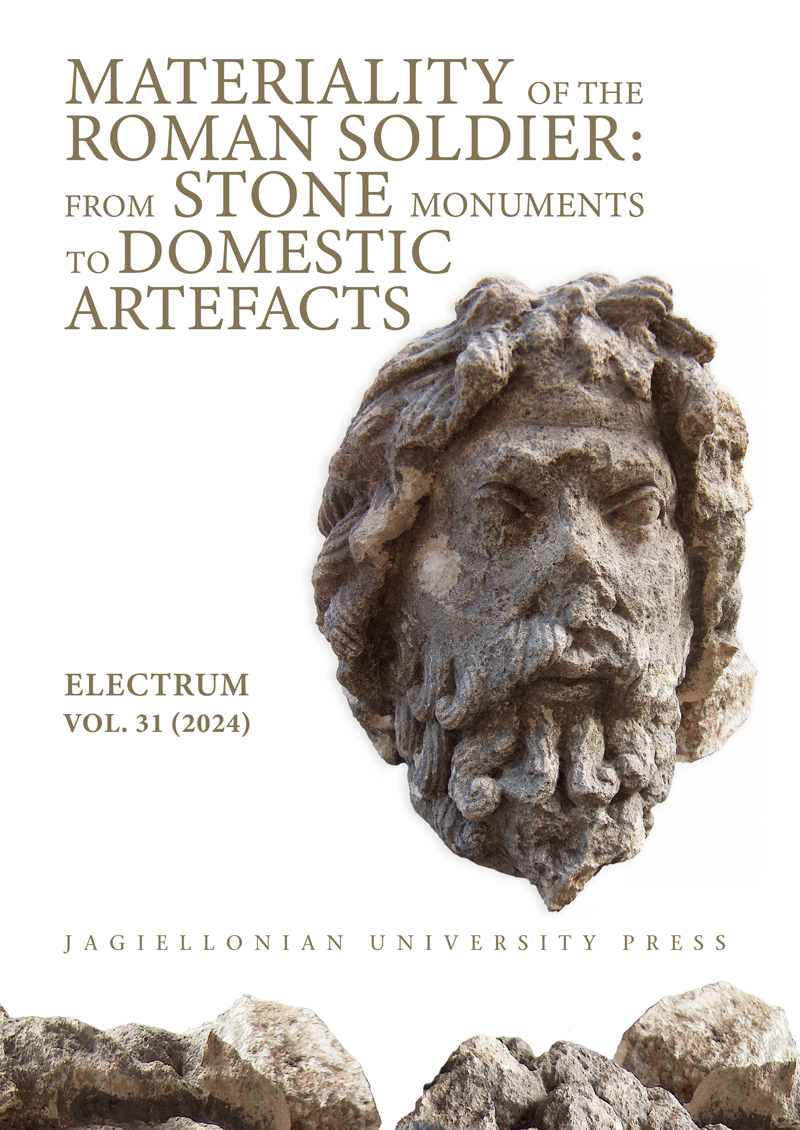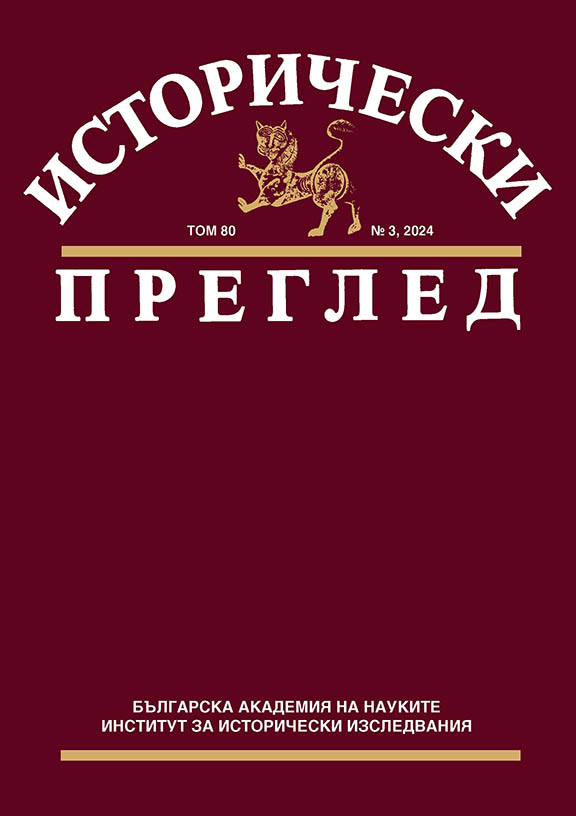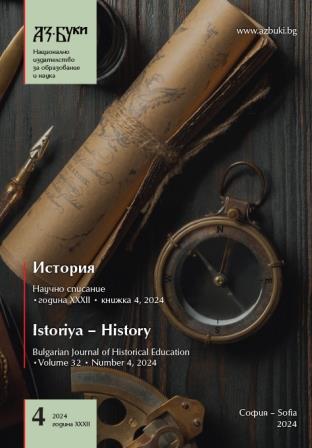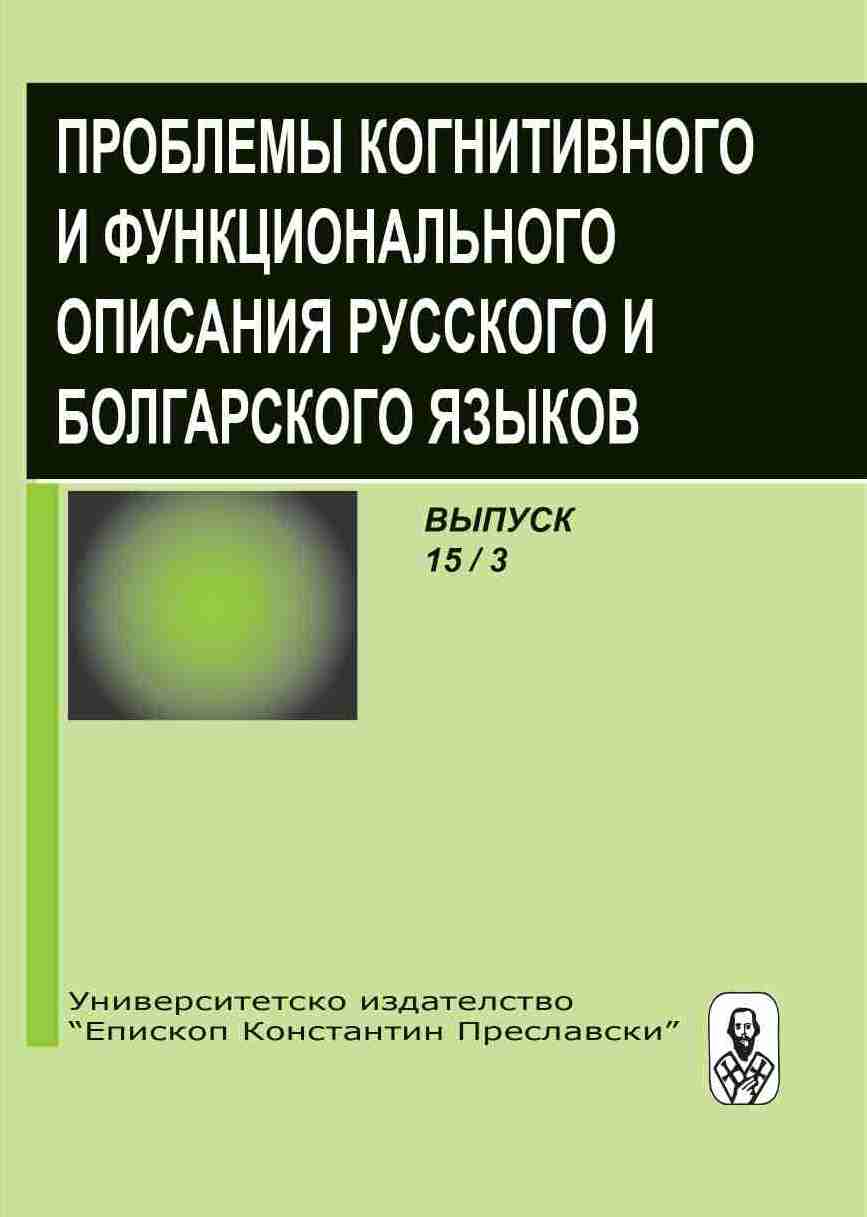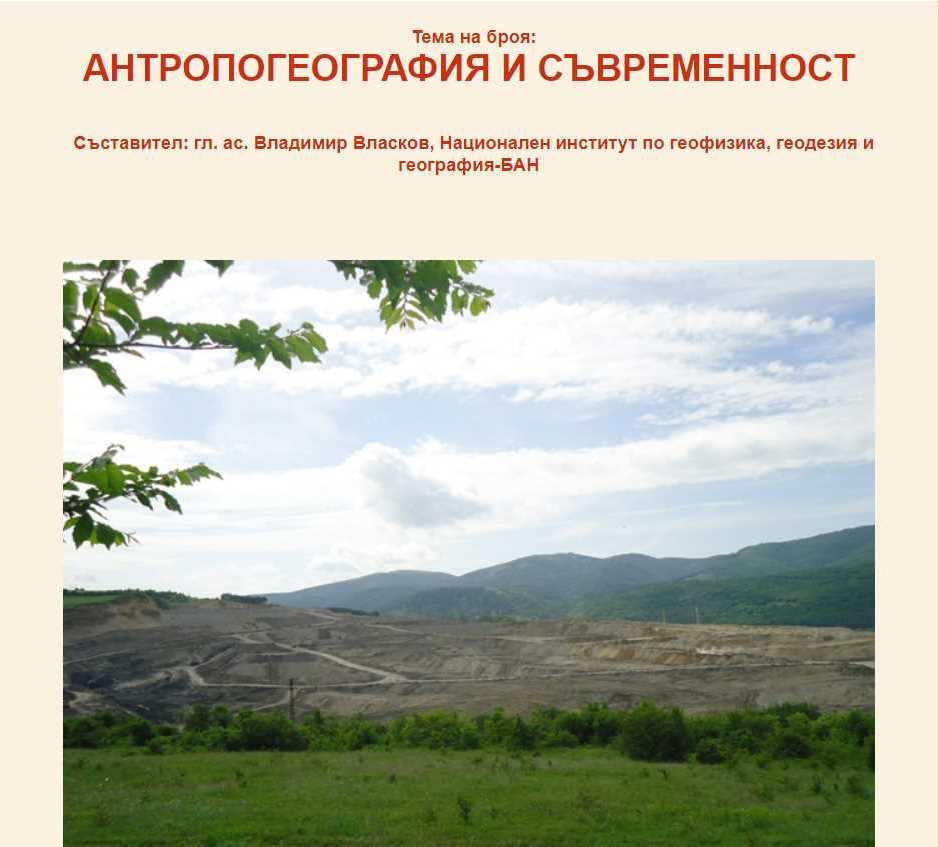Author(s): Nadezhda IlIeva / Language(s): Bulgarian
Issue: 11/2015
Northeast Bulgaria differs with diverse ethnic structure. In 2011 in this part of the country is concentrated 17% of the Bulgarian population, 45% of Turkish and 22% of the Roma ethnic group. The aim of the study is to trace the demographic characteristics, the territorial location of the ethnic communities in Northeastern Bulgaria, and to clarify the complex of factors affected on the demographic processes in the different historical, socio-economic and political conditions after the Liberation of Bulgaria (1878) to nowadays. Based on changes in the number and share of Bulgarian, Turkish and Roma population, the peculiarities of their natural reproduction, the nature of migration movements, the reasons causing them, the policies towards ethnic groups, three periods in the development of ethnodemographic processes in Northeastern Bulgaria are clearly outlined. From the Liberation to the end of the Second World War - Liberation marked the beginning of large-scale demographic processes in the new political and economic conditions in Bulgaria. The fragmentation of its ethnic territories causes immigration movements. This part of the country accepts half of the refugees in Bulgaria before (1885) and one third of the refugees until the end of World War II. The presence of thousands of 138 refugees have a positive impact on Bulgaria and mixed ethnically areas, as they help to strengthen the Bulgarian character of the settlements. The most general result is the establishment of the ethnic homogeneity in the ethnic structure of the population of Northeastern Bulgaria and the significant increase of the settlements populated entirely by Bulgarians (23 to 39%) and predominantly Bulgarian population (from 20 to 24%). In 1900 these groups settlements are widespread in the areas along the Danube and Black Sea. Until 1946 their territorial distribution, gradually expanded into the eastern parts of South Dobrogea, East Stara planina (east of Gerlovo, Slannik and Tuzluka) and the municipalities west of Ludogorie. - Liberation puts Bulgarian Turks in radically different political, social and economic conditions. Regardless of the tolerant policy that led Bulgarian government, which is confirmed by the adoption of the Tarnovo Constitution, which gives civil, cultural and political rights to all its citizens, free primary education for all, freedom of speech and press and etc. emigration of Bulgarian Turks throughout the period did not stop. The main reasons for this are political changes and change of the position of Bulgarian Turks in the social structure of society. Considering that in the period to the end of the Second World War the Turkish population is in the first phase of demographic transition (high birth and death rates, which define moderately high levels of natural growth), it is clear that external migrations, depending on their nature and intensity are the most important factor influencing the changes in the number and territorial location of the Turkish population in Northeastern Bulgaria. The first period under consideration is characterized by the fastest rates of reduction in the number of the Turkish population and the most intensive processes in the changes of the its number and location. The region of Ludogorie, and historical-ethnographic area Gerlovo, Slannik Tuzluka retain their territorial differentiation, which helps to preserve his number, location and ethnical structure. Throughout the period the group of settlements populated entirely and predominantly with Bulgarian Turks retain their ethnic structure and show an increase in the number of the Turkish population. Territories with less compactness of the Turkish population a significant reduction in the number and its relative share is observed. - Until World War II settlements with presence of Roma constitute an insignificant share in the structure of settlements. For example Bulgarian-Roma settlements constitute 2%; TurkishRoma settlements – 1%; settlements with diverse ethnic structure – 5%. Formation of a territorial concentration of these groups of settlements is not observed. Since the end of World War II until the early 90s - The Socialist period is characterized by increasing of the differences in the demographic indicators between the main ethnic communities. Since the mid 50s Roma and Turkish populations are entering in the second phase of demographic transition, while Bulgarians started the third. The second phase for Bulgarian Turks ends late 80s of the twentieth century, while Roma continued to the end of the 90s of the twentieth century. The fourth phase in Bulgarian started in the mid 80s, and the natural growth is already negative. - During the period, unlike previous, significant changes in the ethnic structure of the population in Northeastern Bulgaria do not occur. There is a spatial diversification of the observed processes. During this period the positive values of the growth rate in the Bulgarian population are distinguished only in regional centers and some Black Sea municipalities. The biggest decrease in the number and proportion of Bulgarians stand out territories with compact Turkish population. In the migration processes, caused by the collectivization of agriculture and rapid industrialization of the country takes part predominantly Bulgarian population. Resulting 139 in a decrease of its number in villages and in areas with mixed ethnic structure. Its growth only in the urban and municipal centers is observed. As a result of these processes has been a significant reduction in the group settlements populated entirely with Bulgarian population (from 29 to 19%) and settlements with predominantly Bulgarian population (from 24 to 12%). - Policy towards ethnic groups in the country is characterized, similar to the previous period, with too much inconsistency regarding the status of ethnic groups. At the same time plays an important role in the policy pursued by Turkey, which seeks to regulate the number of Turkish ethnic group, by limiting the number of immigrants from the country. The losses of Turkish population due to inflow in 1950-1951, the 1969-1978, the so-called. "Great trip" in the late 80s are compensated by the high levels of population growth. As a result the number is growing compared to the end of World War II. Regardless of the policy of industrialization in the country, the regions with mixed population perform secondary functions in the national economy. Despite their progress in the socio-economic development, they continue to evolve significantly less than other parts of the country, and therefore remain predominantly agrarian character. In areas with mixed ethnic structure the rate of urbanization is weake and low intensity of migration to the cities of the Turkish population is observed, which mainly deals with agricultural activities and stays to live mainly in the villages. Unlike the years before the Second World War most affected by the emigration of the Turkish population (especially during the so-called "Revival process") are distinguished areas with the greatest territorial compactness of Bulgarian Turks – Ludogorie, Eastern Stara Planina which is in line with the policy of the Bulgarian government to reduce the number and compactness of the Turkish population in these areas. Unlike previous periods municipalities with a higher proportion of the Turkish population is observed the highest rates of decrease. Most affected by emigration are the municipalities with the highest percentage of the Turkish population. Regardless of the observed processes the desired results are not achieved. The rapid reduction of the Bulgarian population in villages as a result of ongoing migration from villages to the towns and the negative rates of natural growth not only helps to preserve the compactness of the Turkish population, but also to increase its share. Unlike the previous period, an increase of villages entirely inhabited by Turkish population (from 9 to 17%) at the expense of the villages with predominantly Turkish population (from 17 to 12%) is observed. - An increase in groups with presence of Roma population is observed: Bulgarian-Roma settlements from 2 to 6%; settlements with diverse ethnic structure from 8 to 20%; for the first time group with predominantly Roma population is occur, which in 1992 accounted 2 % of the settlements in Northeastern Bulgaria. - Since the early 90s until the beginning of XXI century - Constitution adopted in 1991, which enshrined the most important legal foundations, provide full civil and political rights of all citizens regardless of their ethnic identity. The severe social and economic crisis occurred after 1989 led to an accelerated rate of development of demographic transition and reduction of fertility in all three ethnic communities country. - Socio-economic problems that accompany the transition period are crucial to make a decision to emigrate for the three ethnic communities and displace the influence of the political factor that is leading in previous periods. The greatest intensity of emigration at the beginning of the period is typical for the Turkish population, while the Roma emigration reached after the accession of Bulgaria to the EU in 2007. All these factors have a decisive influence on the formation of their number in Northeast Bulgaria 140 - The negative natural growth, in combination with the aging age structure and emigration, are the reasons for the rapid reduction of the Bulgarian population after 1989. The main factor for the negative growth rate in the Turkish population between the last two censuses is emigration, mainly to Turkey. The Roma high positive natural growth, in combination with poor mobility due to immigration restrictions imposed on them, favoring the increase of its number. - All these processes determine the changes in the ethnic structure of municipalities and individual settlements. In most municipalities there is an increase in the share of Turkish and Roma population. After the detailed analysis of the spatial characteristics of the changes in the number and location of Bulgarian, Turkish and Roma population the following conclusions can be formulated: despite the reduction in the number of Turkish population, its territorial dislocation does not change, but on the contrary – there is an increase in settlements entirely populated and predominantly by the Turkish population; reducing the share of settlements with diverse ethnic structure; increase in settlements with predominantly Roma population (absolute number has doubled from 22 to 42 villages).
More...
